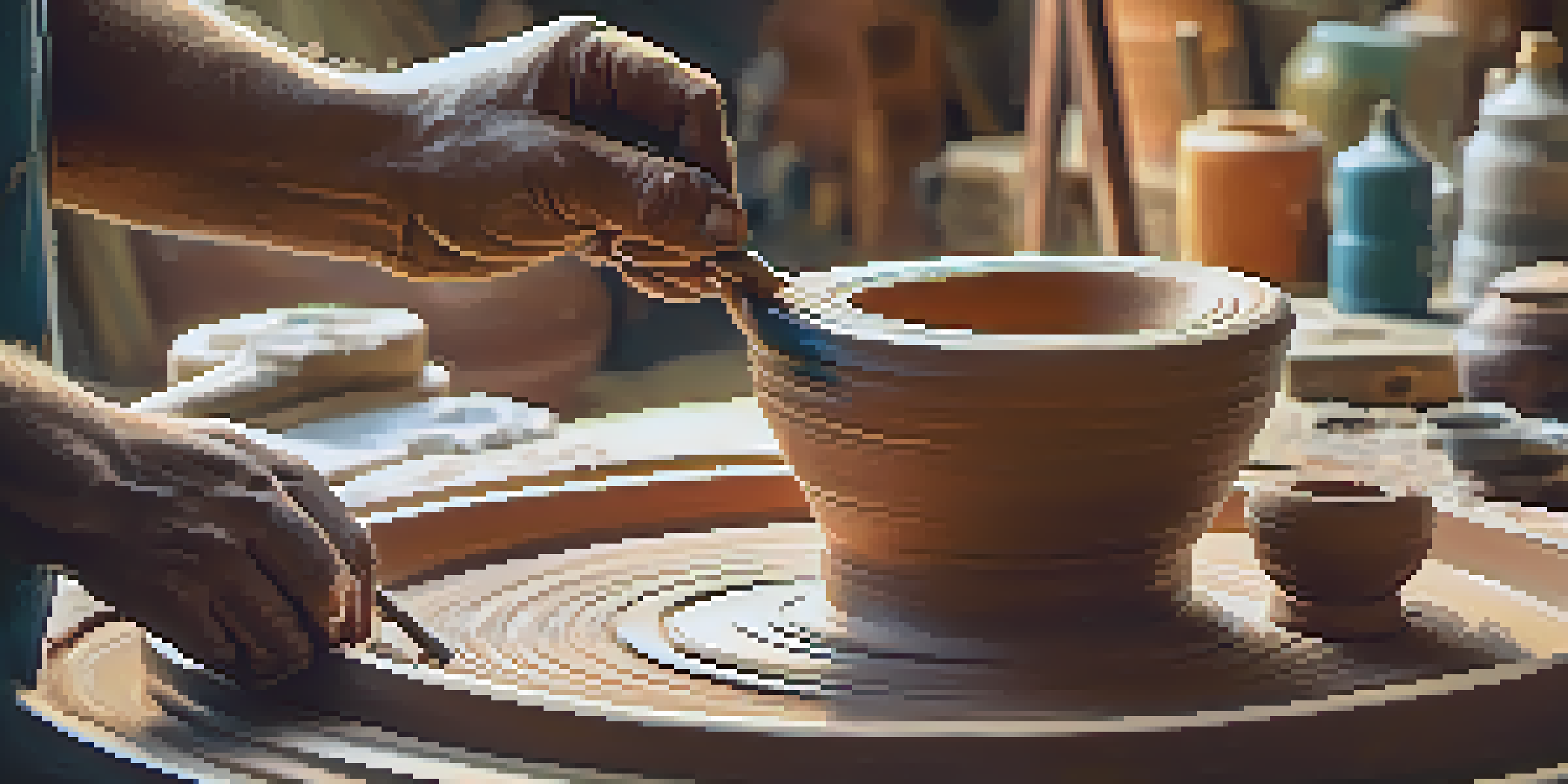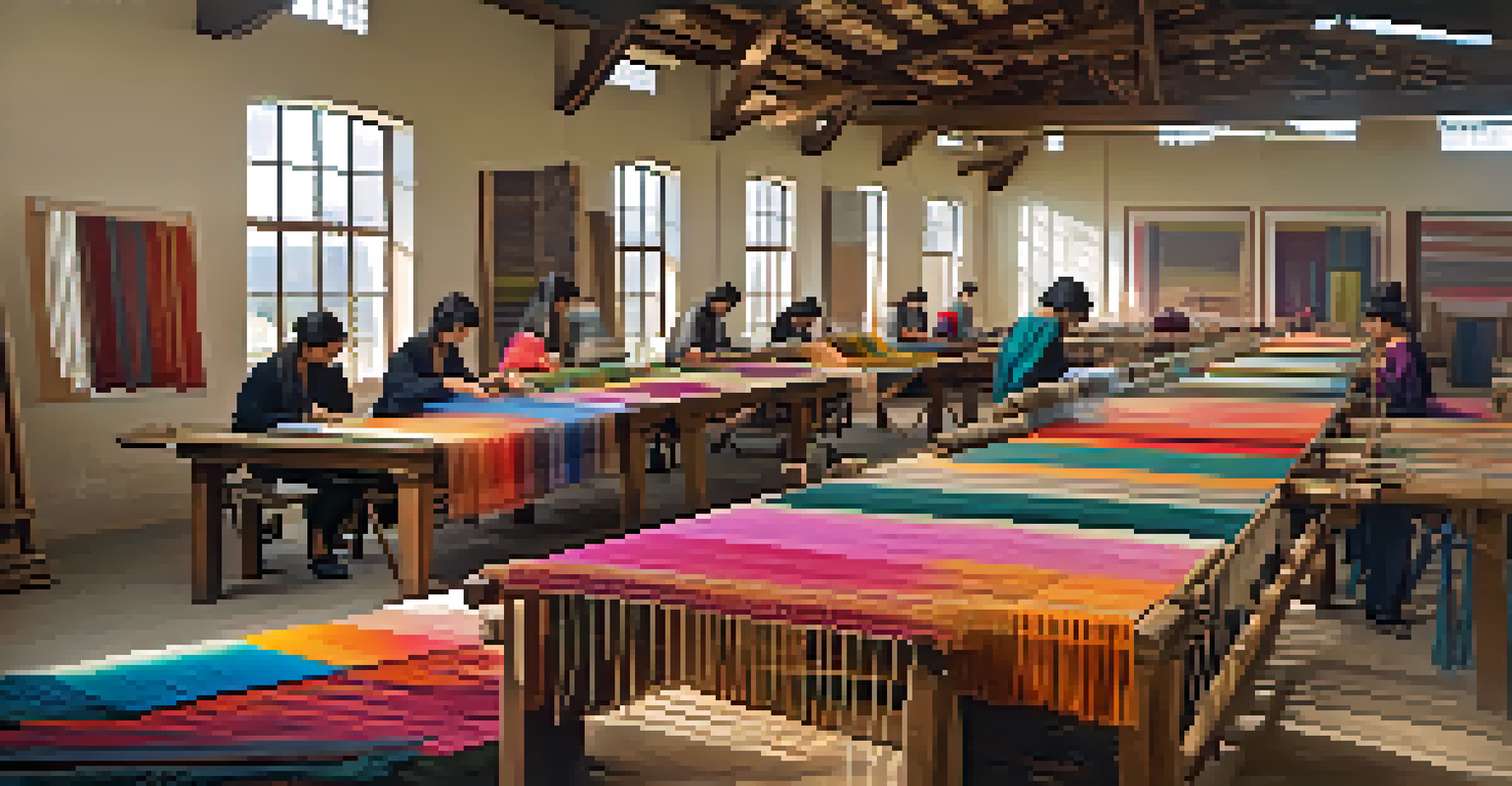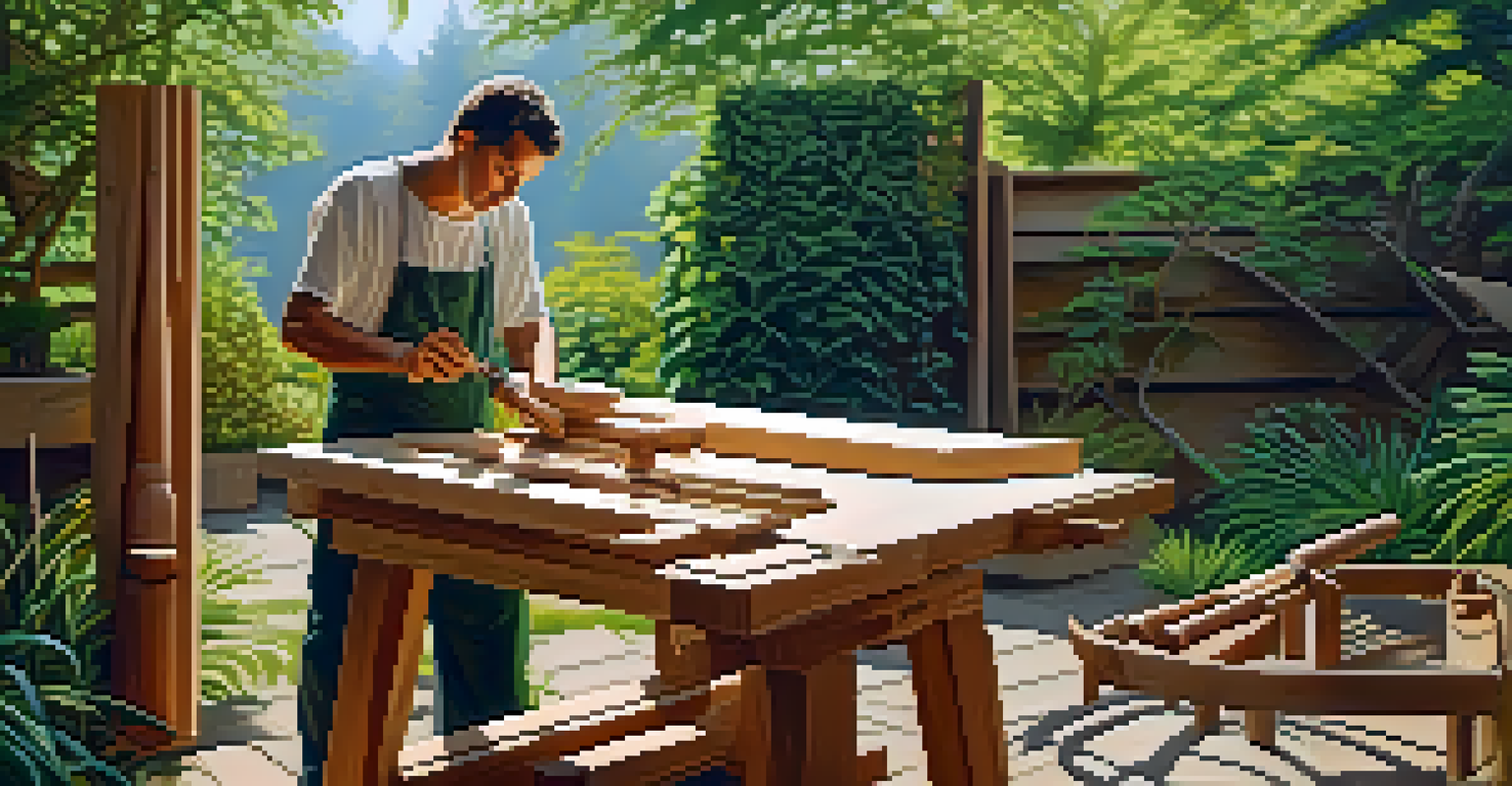The Evolution of Traditional Crafts in Contemporary Art

Understanding Traditional Crafts and Their Roots
Traditional crafts encompass various handmade techniques passed down through generations. These crafts, such as pottery, weaving, and woodworking, are often tied to cultural identities and historical practices. They reflect the values, skills, and materials of their time, providing a glimpse into the lives of those who created them.
Craftsmanship is not a mere act of making; it is about the stories that come alive through the process of creation.
Over the years, these crafts have served not only functional purposes but also artistic ones, evolving alongside cultural shifts. As societies transformed, so too did the methods and materials used in these crafts, adapting to the changing needs and tastes of the people. This evolution laid the groundwork for their resurgence in contemporary art.
Today, these traditional crafts are being revisited and reinterpreted by modern artists, merging old techniques with new concepts. This blending creates a unique dialogue between the past and present, allowing for a deeper appreciation of both the craftsmanship and the artistic expression involved.
The Influence of Technology on Traditional Crafts
In the digital age, technology has dramatically influenced traditional crafts, both positively and negatively. On one hand, tools like 3D printing and digital design software enable artists to experiment with new forms and techniques that were once unthinkable. This fusion of technology with traditional methods creates innovative artworks that push the boundaries of craftsmanship.

However, this technological shift also raises questions about authenticity and the value of handmade items. As artists embrace digital tools, there’s a risk of overshadowing the skill and labor inherent in traditional crafts. The challenge lies in balancing these modern advancements while honoring the time-honored techniques that define them.
Crafts Blend Tradition and Innovation
Modern artists are merging traditional craftsmanship with contemporary techniques, creating a dynamic dialogue between the past and present.
Artists today are navigating this complex landscape by incorporating technology into their work without losing sight of the traditional skills that inspired them. This thoughtful integration helps preserve the essence of these crafts while simultaneously expanding their reach and relevance in contemporary art.
Revival of Interest in Handcrafted Art
Amidst a fast-paced, mass-produced world, there’s a growing appreciation for handcrafted art. Many contemporary artists are drawing inspiration from traditional crafts, leading to a revival of interest in handmade techniques. This movement reflects a desire for authenticity and a connection to the past, as people seek to reclaim the value of artisanal work.
Art is the most beautiful of all lies; it is a reflection of our culture, our stories, and our shared humanity.
This resurgence is also fueled by a broader cultural shift towards sustainability and ethical production methods. Consumers are increasingly supporting local artisans and handmade products, recognizing the environmental and social impacts of mass manufacturing. This shift not only benefits traditional crafts but also encourages artists to innovate within these time-honored practices.
As a result, we’re witnessing a new wave of artists who blend traditional craftsmanship with contemporary aesthetics. This combination not only celebrates the skill involved in these crafts but also challenges the boundaries of what art can be in today’s society.
Artisans as Modern Storytellers
Today’s artisans are not just makers; they are storytellers who weave narratives through their craft. Each piece they create embodies personal experiences, cultural heritage, and social commentary. By using traditional techniques, artists can express contemporary issues, bridging the gap between the past and present.
For example, a ceramicist might use ancient glazing methods to create pottery that reflects modern environmental concerns. This storytelling aspect elevates traditional crafts to a form of contemporary art that resonates with audiences on multiple levels. It invites viewers to consider the deeper meanings behind the materials and methods used.
Artisans as Cultural Storytellers
Today's artisans weave narratives into their work, using traditional methods to address contemporary issues and foster community connections.
Moreover, these artisans often collaborate with communities, further enriching their stories. By involving others in the creation process, they foster a sense of shared history and collective identity, making their work not only personal but also communal.
Cultural Exchange and Globalization in Crafts
Globalization has played a significant role in the evolution of traditional crafts. As cultures intermingle, techniques and styles are exchanged, leading to a rich tapestry of artistic expression. Modern artists often draw from a diverse range of influences, incorporating elements from various traditions into their work.
This cultural exchange can lead to innovative fusions, creating new art forms that resonate with a global audience. However, it also raises concerns about appropriation, where elements of one culture are used without proper acknowledgment or respect. Navigating these complexities is crucial for artists seeking to honor the traditions they draw inspiration from.
By fostering respectful dialogue and collaboration, artists can create works that celebrate diversity while acknowledging their roots. This approach not only enriches contemporary art but also ensures that the voices and stories behind traditional crafts are preserved and honored.
The Role of Education in Preserving Traditional Crafts
Education plays a vital role in the preservation and evolution of traditional crafts. Art schools, workshops, and community programs are increasingly incorporating these techniques into their curriculums. By teaching the skills and philosophies behind traditional crafts, they ensure that future generations can carry on these practices.
Moreover, educational initiatives often emphasize the importance of craftsmanship, encouraging students to explore the relationship between art and function. This holistic approach not only nurtures technical skills but also fosters a deep appreciation for the heritage of these crafts.
Education Preserves Craft Heritage
Educational initiatives are vital for preserving traditional crafts, equipping future generations with the skills and appreciation needed to innovate within these art forms.
As students engage with traditional methods, they’re inspired to innovate and reinterpret them for contemporary contexts. This blend of education and creativity helps keep traditional crafts alive, ensuring they remain relevant in today’s ever-changing art landscape.
Future Directions for Traditional Crafts in Art
The future of traditional crafts in contemporary art is full of possibilities. As artists continue to explore the intersections of old and new, we can expect to see exciting innovations that challenge our perceptions of both craft and art. This ongoing dialogue between tradition and modernity will likely lead to new forms of expression that reflect our evolving society.
Sustainability will also play a crucial role in shaping the future of these crafts. As awareness of environmental issues grows, artists are likely to focus on eco-friendly materials and practices, ensuring that their work not only celebrates tradition but also respects the planet. This shift towards sustainability may redefine what it means to be a contemporary artist.

Ultimately, the evolution of traditional crafts in contemporary art will continue to thrive as long as there are artists willing to explore, innovate, and tell their stories. By honoring the past while embracing the future, these artists ensure that traditional crafts remain a vibrant part of our cultural landscape.